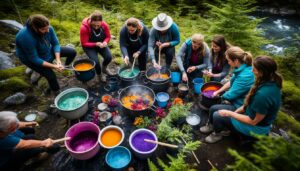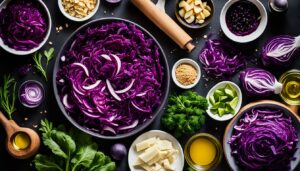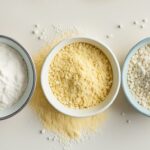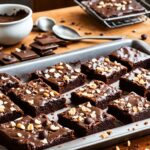Originally posted on December 13, 2023 @ 6:14 am
Attract beautiful hummingbirds to your backyard or garden with this simple homemade hummingbird food recipe. If you’ve ever wondered what is the recipe for hummingbird food, look no further. All you need are two ingredients – hot water and granulated sugar. It’s a breeze to make and will have the hummingbirds flocking to your feeder in no time.
Contents
- 1 How to Make Hummingbird Nectar
- 2 Tips for Attracting Hummingbirds with Homemade Food
- 3 Best Hummingbird Feeders to Buy
- 4 Cleaning and Maintenance of Hummingbird Feeders
- 5 When and Where to Put Out Hummingbird Feeders
- 6 Fun Facts About Hummingbirds
- 7 Conclusion
- 8 FAQ
- 8.1 What is the recipe for hummingbird food?
- 8.2 How do I make hummingbird nectar?
- 8.3 How can I attract hummingbirds with homemade food?
- 8.4 What are the best hummingbird feeders to buy?
- 8.5 How do I clean and maintain hummingbird feeders?
- 8.6 When and where should I put out hummingbird feeders?
- 8.7 What are some fun facts about hummingbirds?
- 9 Source Links
Key Takeaways:
- Homemade hummingbird food is made with hot water and granulated sugar.
- Avoid using red dye in hummingbird food, as it can be harmful.
- The ratio of water to sugar in hummingbird nectar is typically 4:1.
- Homemade hummingbird food should be changed every other day to prevent spoilage.
- Place your hummingbird feeder in low-activity areas and near trees for perching.
How to Make Hummingbird Nectar

To attract beautiful hummingbirds to your backyard or garden, it’s essential to provide them with the right nectar. Making your own hummingbird nectar is a simple and cost-effective way to ensure these delightful creatures have a steady supply of food. Follow these easy steps to create homemade hummingbird nectar.
- Boil hot water: Start by boiling hot water. Boiling the water helps remove impurities and ensures a clean nectar for the hummingbirds.
- Add granulated sugar: Once the water has reached a boil, add granulated sugar to it. The recommended ratio of water to sugar is typically 4:1. However, you can also use a ratio of 3:1 or 5:1, depending on your preference and the activity level of the hummingbirds in your area.
- Stir until dissolved: Stir the mixture vigorously until the sugar is completely dissolved. This ensures that the nectar is well-mixed and ready for the hummingbirds to enjoy.
Remember to use granulated white sugar for the nectar and avoid using raw or unprocessed sugars, honey, or corn syrup. These can be harmful to hummingbirds and may not provide the necessary nutrients they need. Additionally, artificial sweeteners and red dyes should be avoided as they are also harmful to hummingbirds.
Once you have prepared the hummingbird nectar, let it cool completely before filling your hummingbird feeder. Leftover nectar can be stored in the refrigerator for up to two weeks.
It’s important to clean and change your hummingbird feeders every other day to prevent mold growth and ensure the health of the hummingbirds. Additionally, always use fresh nectar and avoid leaving it out for too long in hot weather.
| Ingredients | Instructions |
|---|---|
| Hot water | Boil the hot water to remove impurities. |
| Granulated sugar | Add sugar to the boiling water and stir until dissolved. |
Tips for Attracting Hummingbirds with Homemade Food

If you want to attract hummingbirds to your backyard with homemade food, there are a few tips to keep in mind. By following these suggestions, you can create an enticing environment that will attract these vibrant birds and provide them with the nourishment they need.
1. Choose the Right Location
When placing your hummingbird feeder, select a low-activity area away from pets and children. This will help minimize disturbances and ensure the birds feel safe while feeding. Additionally, consider placing the feeder near trees or shrubs where hummingbirds can perch on branches and keep an eye out for predators.
2. Avoid Red Dye
While you may be tempted to add red dye to the hummingbird food to attract them, it is unnecessary and potentially harmful to their health. Hummingbirds are naturally attracted to brightly colored flowers, so the red color of the feeder itself is enough to catch their attention. Stick to a homemade food recipe without any artificial additives.
3. Provide Nectar-Rich Flowers
In addition to offering homemade food in feeders, you can attract hummingbirds by planting nectar-rich flowers in your garden. Some examples of flowers that hummingbirds love include bee balm, trumpet honeysuckle, and bleeding hearts. These vibrant flowers provide a natural source of nectar and will further entice hummingbirds to visit your yard.
By employing these tips, you can create an inviting space for hummingbirds to feed and enjoy your homemade food. Remember to be patient as it may take some time for the birds to discover your feeder and flowers, but with persistence, you will soon find yourself with a garden full of these delightful creatures.
Best Hummingbird Feeders to Buy

When it comes to selecting a hummingbird feeder, there are a few key features to consider. A sturdy construction ensures durability and longevity, while a vibrant red color attracts hummingbirds. Additionally, easy maintenance is crucial for cleaning and refilling the feeder. Here are some top recommendations for the best hummingbird feeders:
- Nature’s Rhythm Red Antique Glass Bottle Hummingbird Feeder: This elegant glass feeder adds a touch of charm to your garden. It features a vintage design with red accents, providing an irresistible attraction to hummingbirds. The glass bottle is easy to clean and refill, making it a popular choice among hummingbird enthusiasts.
- Juegoal Glass Hummingbird Feeders: These glass feeders are not only visually appealing but also highly functional. They feature bright red flowers that mimic natural nectar sources, making them highly attractive to hummingbirds. The wide-mouth design allows for effortless cleaning and refilling, ensuring convenience for bird enthusiasts.
- Sewanta Hummingbird Feeders: These durable plastic feeders offer a budget-friendly option without compromising on quality. The red color and flower-shaped feeding ports are designed to catch the attention of hummingbirds. The feeder is easy to assemble, clean, and refill, making it an excellent choice for beginners or those on a tight budget.
In conclusion, choosing the right hummingbird feeder is essential to attract these beautiful birds to your garden. Consider factors such as sturdiness, red color, ease of maintenance, and price when making your selection. By opting for feeders like Nature’s Rhythm Red Antique Glass Bottle Hummingbird Feeder, Juegoal Glass Hummingbird Feeders, or Sewanta Hummingbird Feeders, you can create an inviting space for hummingbirds to feed and enjoy their presence.
Cleaning and Maintenance of Hummingbird Feeders

Regularly cleaning your hummingbird feeders is essential to ensure the health and well-being of these delightful creatures. Mold growth can be harmful to hummingbirds, so it’s important to keep your feeders clean and in optimal condition. Here are some tips for maintaining clean and beautiful hummingbird feeders:
- Rinse with hot water: After emptying the old nectar, rinse the feeder with hot water. Avoid using soap or any other cleaning agents, as they can leave residues that alter the flavor of the nectar.
- Deep cleaning once a month: To give your feeder a more thorough cleaning, use a vinegar or hydrogen peroxide solution. Soak the feeder in the solution for a few minutes, then scrub with a brush to remove any remaining debris. Rinse well with hot water afterwards.
- Prevent spoilage: Hummingbird feeders should be placed in an area with partial sun. Direct sunlight can cause the nectar to spoil more quickly, so it’s best to find a spot that offers some shade throughout the day.
To further illustrate the importance of cleaning and maintenance, take a look at the table below, which highlights the potential risks of neglecting proper feeder care and the recommended steps to keep your feeders clean:
| Potential Risks | Recommended Steps |
|---|---|
| Mold growth | Rinse with hot water after emptying old nectar. Perform a deep cleaning once a month with a vinegar or hydrogen peroxide solution. |
| Residue buildup | Avoid using soap or cleaning agents. Rinse feeders thoroughly with hot water to remove any residues. |
| Poor nectar quality | Place feeders in an area with partial sun to prevent spoilage. |
By following these cleaning and maintenance guidelines, you can ensure that your hummingbird feeders remain clean, safe, and inviting for these tiny visitors. Your efforts will be rewarded with the joy of watching hummingbirds flutter and feed in your backyard or garden.
When and Where to Put Out Hummingbird Feeders

Attracting hummingbirds to your backyard or garden is an exciting and rewarding experience. To maximize the chances of attracting these delightful creatures, it’s important to know when and where to put out your hummingbird feeders.
The timing for setting up hummingbird feeders depends on your location. In the southern parts of the United States, you can start putting out feeders as early as February and keep them up until November. In the middle of the country, it’s best to plan on placing feeders from April through October. Along the northern states, early May through September is the ideal time to put out feeders.
When choosing the location for your hummingbird feeders, consider placing them in low-activity areas, away from where pets or kids play. Hummingbirds prefer peaceful environments where they can feed undisturbed. Additionally, it’s beneficial to position the feeders near trees or shrubs. These natural elements provide perching spots for hummingbirds to rest and observe their surroundings for potential predators.
To help you visualize the best placement for your hummingbird feeders, here’s a table summarizing the timing and preferred locations:
| Location | Timing to Put Out Feeders | Preferred Feeder Locations |
|---|---|---|
| Southern States | February to November | Low-activity areas near trees |
| Middle States | April to October | Low-activity areas near trees |
| Northern States | Early May to September | Low-activity areas near trees |
By following these guidelines and providing a comfortable and safe environment, you’ll increase the chances of attracting and enjoying the mesmerizing presence of hummingbirds in your outdoor space.
Fun Facts About Hummingbirds
Hummingbirds are truly remarkable creatures with unique characteristics that set them apart from other bird species. Here are some interesting facts about hummingbirds:
- Heartbeat: Did you know that the heartbeat of a hummingbird can reach an incredible 1,200 times per minute? This rapid heartbeat allows them to sustain their high-energy lifestyle.
- Eyesight: Hummingbirds have excellent eyesight, allowing them to see vibrant colors and spot tiny insects from a distance. However, they do not have a sense of smell.
- Small Eggs: Compared to other bird species, hummingbirds lay the smallest eggs. These tiny eggs are about the size of a pea and are carefully incubated by the female hummingbird.
- Speed: Hummingbirds are incredibly agile flyers. They can fly up to 30 miles per hour, making them one of the fastest birds in the world.
- Sugar Consumption: Hummingbirds have an incredibly high metabolism. In fact, they consume about half their body weight in sugar each day to fuel their constant flying and fast heartbeat.
- Feathers: Unlike other birds, hummingbirds have fewer feathers, which makes them lighter for flight. Their feathers are also iridescent, reflecting and refracting light to create beautiful, shimmering colors.
- Flight Directions: Hummingbirds are the only birds that can fly in any direction, including forwards, backwards, and upside down. Their unique flying abilities allow them to hover, dart, and change direction with ease.
These fascinating facts about hummingbirds highlight their extraordinary abilities and make them even more captivating to observe in nature. Next, we will explore some of the best hummingbird feeders you can buy to attract these enchanting creatures to your garden or backyard.
Conclusion
In conclusion, attracting hummingbirds with homemade food is a simple and rewarding activity. By using a homemade nectar recipe and providing the right feeder and habitat, you can enjoy the beauty of these delightful creatures in your backyard or garden.
Remember to clean and maintain feeders regularly to prevent mold growth and protect the delicate hummingbirds. Following proper guidelines for attracting and feeding hummingbirds will ensure their health and safety.
With a little effort and care, you can create a welcoming environment for hummingbirds and witness their colorful presence and mesmerizing flight. So, gather your ingredients, prepare the homemade nectar, and hang your feeder in a suitable location. Get ready to be amazed by these tiny and fascinating birds!
FAQ
What is the recipe for hummingbird food?
The recipe for hummingbird food is simple and requires only two ingredients – hot water and granulated sugar. Boil the water, remove from heat, add sugar, and stir until dissolved. Let the mixture cool and pour it into your hummingbird feeder. It is important not to use red dye, as it can be harmful to hummingbirds.
How do I make hummingbird nectar?
To make hummingbird nectar, boil hot water and add granulated sugar, stirring until dissolved. The ratio of water to sugar is typically 4:1, but you can also use ratios of 3:1 or 5:1. It is best to use granulated white sugar and avoid raw or unprocessed sugars, as well as honey or corn syrup. Boiling the water helps remove impurities. Leftover sugar water can be stored in the fridge for up to 2 weeks. Remember to clean and change feeders every other day to prevent mold growth.
How can I attract hummingbirds with homemade food?
To attract hummingbirds with homemade food, place your hummingbird feeder in low-activity areas, away from pets and children. Ideally, place it near trees so hummingbirds can perch on branches and watch for predators. It is important to note that red dye is not necessary and can be harmful. Hummingbirds are attracted to brightly colored and nectar-rich flowers, such as bee balm, trumpet honeysuckle, and bleeding hearts.
What are the best hummingbird feeders to buy?
When purchasing a hummingbird feeder, look for one that is sturdy, has lots of red on it, is easy to wash, fill, and hang, and is reasonably priced. Some recommended feeders include Nature’s Rhythm Red Antique Glass Bottle Hummingbird Feeder, Juegoal Glass Hummingbird Feeders, and Sewanta Hummingbird Feeders.
How do I clean and maintain hummingbird feeders?
Regularly clean your hummingbird feeders to prevent mold growth and protect the delicate hummingbirds. Rinse the feeder with hot water and avoid using soap, as it can leave residues that alter the nectar’s flavor. A deeper cleaning with a vinegar or hydrogen peroxide solution is recommended once a month. Hummingbird feeders should be placed in partial sun to prevent spoilage.
When and where should I put out hummingbird feeders?
The timing for putting out hummingbird feeders depends on your location. In southern parts of the United States, feeders can be set up from February through November. In the middle of the country, plan on placing feeders from April through October. Along the northern states, put out feeders from early May through September. Place feeders in low-activity areas, away from where pets or kids play, and preferably near trees for perching.
What are some fun facts about hummingbirds?
Hummingbirds have fascinating characteristics. Their hearts beat around 1,200 times per minute, they have excellent eyesight but no sense of smell, and their eggs are the smallest of all bird species. They can fly up to 30 mph and consume half their body weight in sugar each day. Hummingbirds have fewer feathers than other birds, allowing them to be lighter for flight, and they are the only birds that can fly in any direction.








